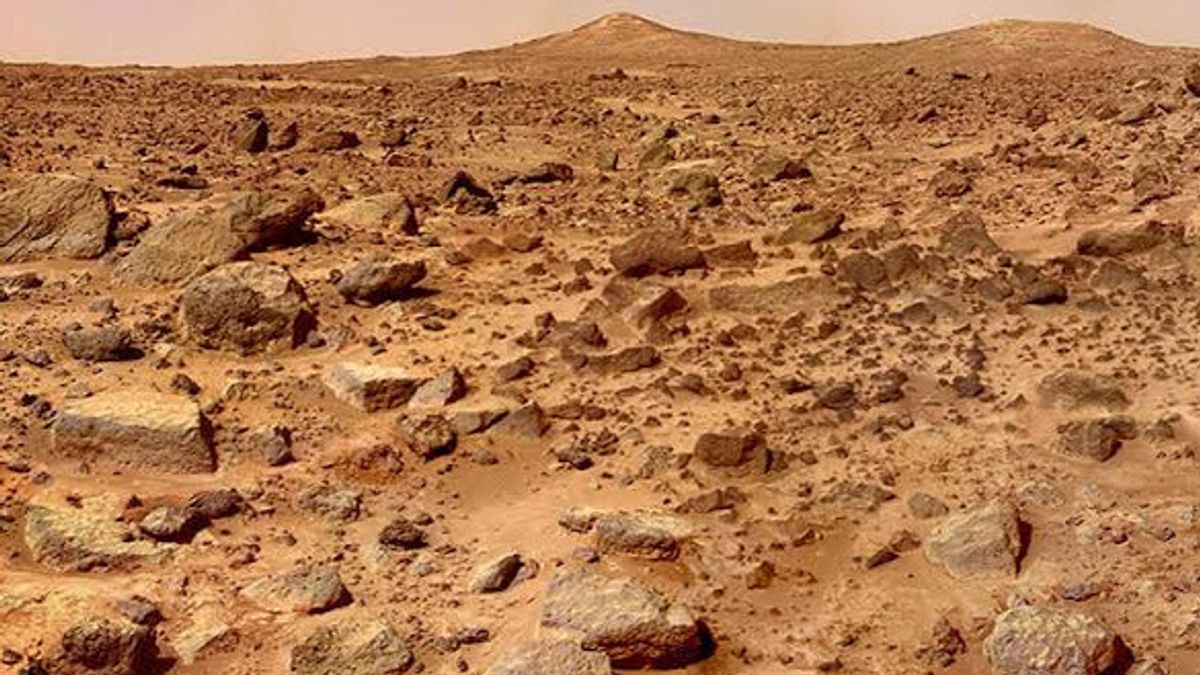JAKARTA - To deepen knowledge and understanding of the Solar System and its surroundings, NASA decided to extend the active planetary science mission run by the spacecraft.
Besides being useful for NASA itself, the scientists associated with the project are also happy. In this extension of the mission, spacecraft that are the oldest or have launched more than 20 years ago, have been selected to continue their operations.
"(Because of) their scientific productivity and potential to deepen our knowledge and understanding of the solar system and its surroundings," NASA said.
Those missions include Mars Odyssey, Mars Reconnaissance Orbiter, MAVEN, Mars Science Laboratory (Curiosity Rover), InSight lander, Lunar Reconnaissance Orbiter, OSIRIS-REx, and New Horizons.
"Most of those selected missions will continue for an additional three years, provided no errors have occurred to the spacecraft," NASA said.
Some exceptions include OSIRIS-REx, which will last for nine years, and InSight, which will continue through the end of this year unless the spacecraft's electric power system allows for longer operations.
The following is a brief summary of the missions that NASA has selected to expand.
1. LRO (Lunar Reconnaissance Orbiter)
Launched in 2009, NASA's lunar orbiter has now been allowed to continue studying the lunar surface and geology again. The evolution of the LRO's orbit will allow it to study new regions far from the poles with unprecedented detail, including the Permanent Shadow Region (PSR) near the poles where water ice can be found.
In addition, LRO will also provide important support for NASA's efforts to return humans to the moon in the next few years.
2. New Horizons
New Horizons flew past Pluto in 2015 and Kuiper belt object (KBO) Arrokoth in 2019. In the second extended mission from its launch in 2006, the spacecraft will continue to explore the distant Solar System, with additional mission details to come at a later date. .
3. MRO (Mars Reconnaissance Orbiter)
In its sixth mission, which extends from its launch in 2006, the MRO orbiter will study the evolution of the Martian surface, ice, active geology, and atmosphere and climate, and continue to support other Mars missions.
4. Mars Odyssey
The Mars Odyssey orbiter, launched in 2001, will conduct new thermal studies of the rock and ice beneath the planet's surface, monitor the radiation environment, and continue its long-term climate monitoring campaign. The mission will also continue to offer support for other Mars spacecraft.
5. MSL (Mars Science Laboratory)
MSL and its Curiosity rover have so far traveled more than 27 kilometers across the Martian surface, exploring Gale Crater.
This is the fourth time that MSL's extended mission from 2011 has launched, and on this occasion, it will begin its ascent to higher altitudes on the Red Planet in a bid to gain unique insights into the history of water on Mars.
6. MAVEN (Mars Atmosphere and Volatile Evolution)
The MAVEN spacecraft has been studying the red planet's gas loss to space since 2013. As solar activity levels increase toward a maximum of an 11-year cycle, ongoing MAVEN observations will deepen our understanding of how Mars' upper atmosphere and magnetic field interact with the Sun.
7. OSIRIS-APEX (Origins, Spectral Interpretation, Resource Identification, Security-Regolith Explorer)
The OSIRIS-REx mission is currently heading back to Earth to unload samples of the asteroid Bennu it collected in 2020. Upon completion of the special delivery in 2023, the mission will be renamed OSIRIS-APEX as the spacecraft is directed to attempt close studies of Apophis, an asteroid 1,200. feet (about 370 meters) in diameter that will come within 20,000 miles (32,000 kilometers) of Earth in 2029.
8. InSight (Interior Exploration using Seismic Investigation, Geodesy, and Heat Transport)
NASA's InSight lander has conducted the only active seismic station outside Earth since its launch in 2018. Its seismic monitoring of martian earthquakes has provided scientists with data on the planet's interior, formation, and current activity, with a mission set to continue this work.
The English, Chinese, Japanese, Arabic, and French versions are automatically generated by the AI. So there may still be inaccuracies in translating, please always see Indonesian as our main language. (system supported by DigitalSiber.id)








